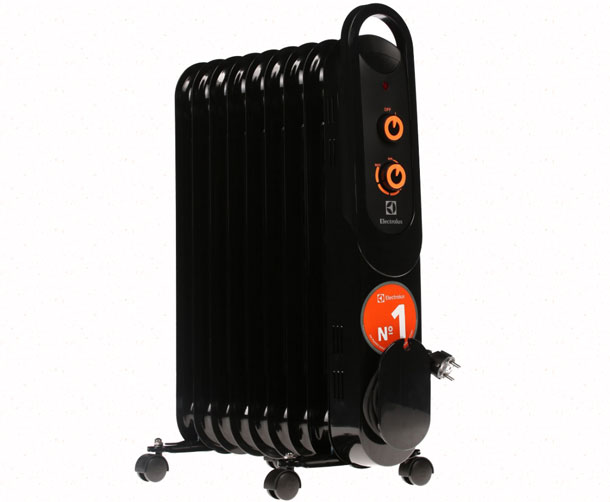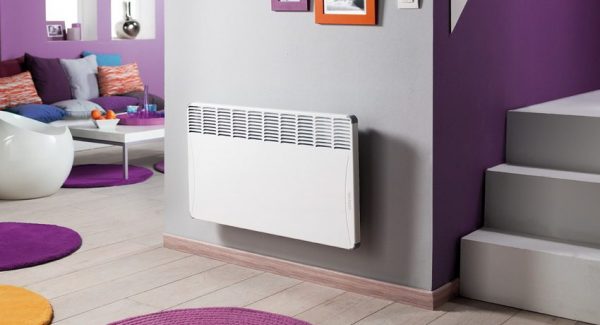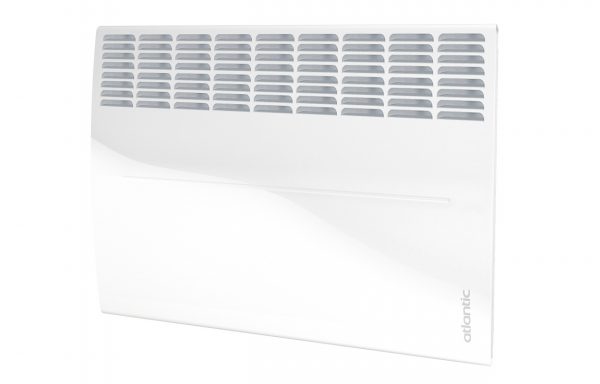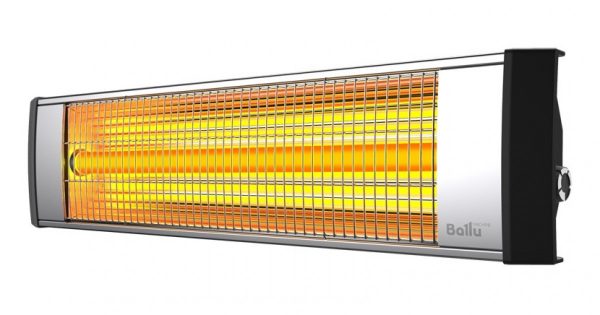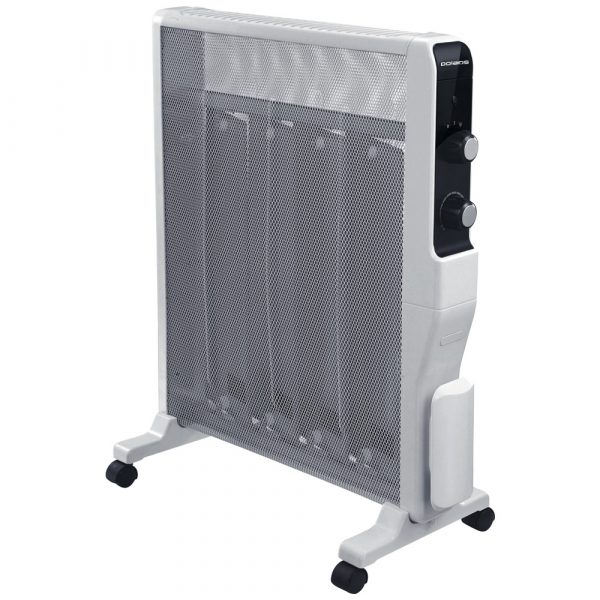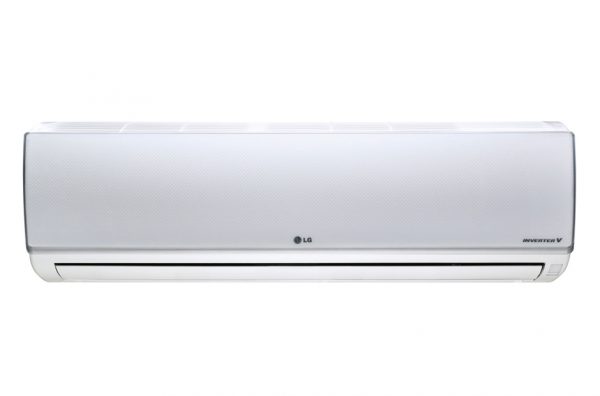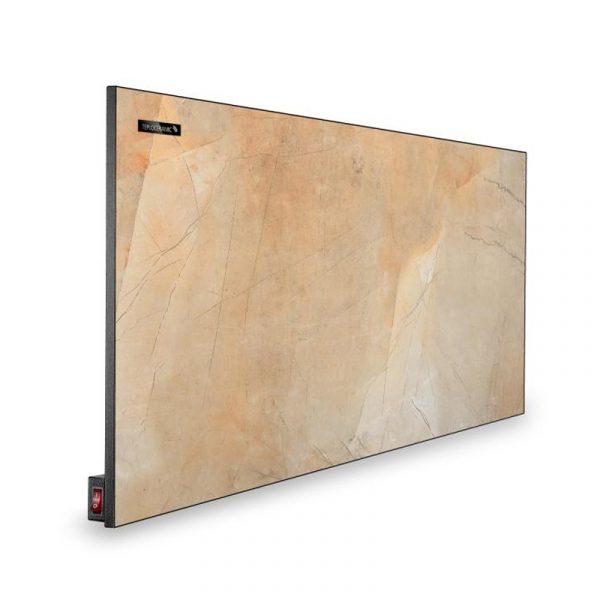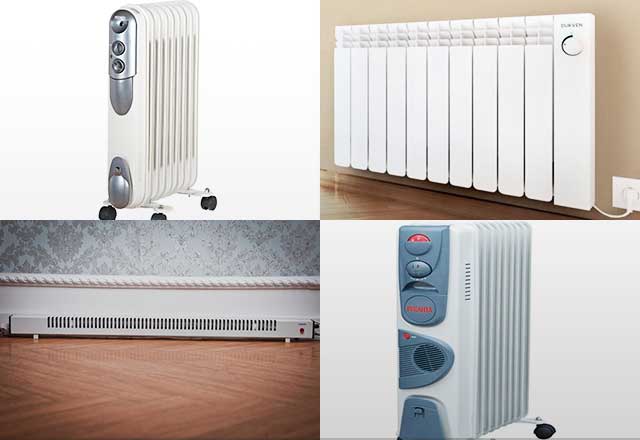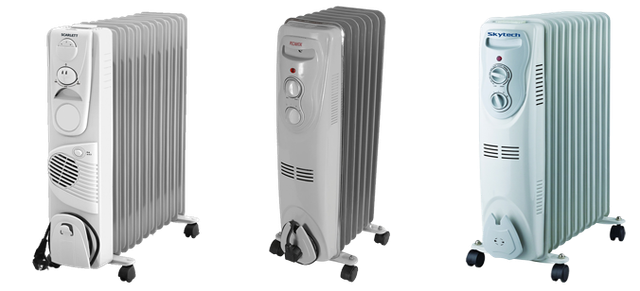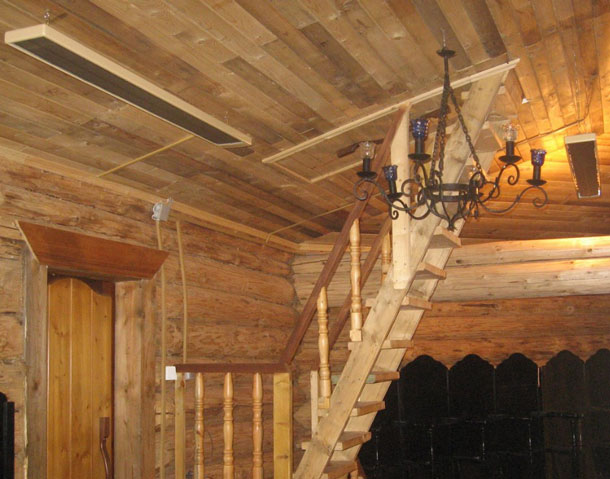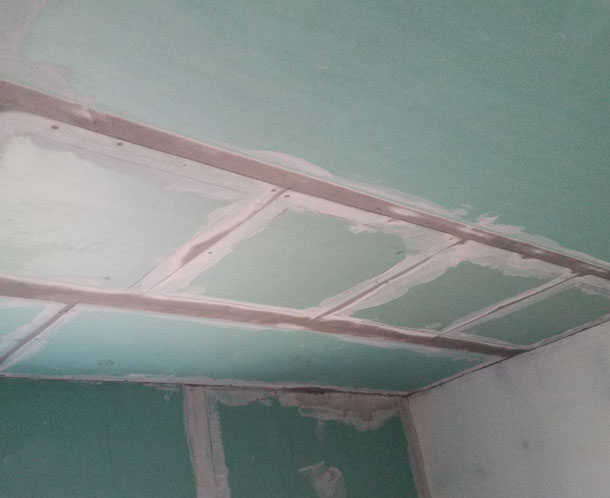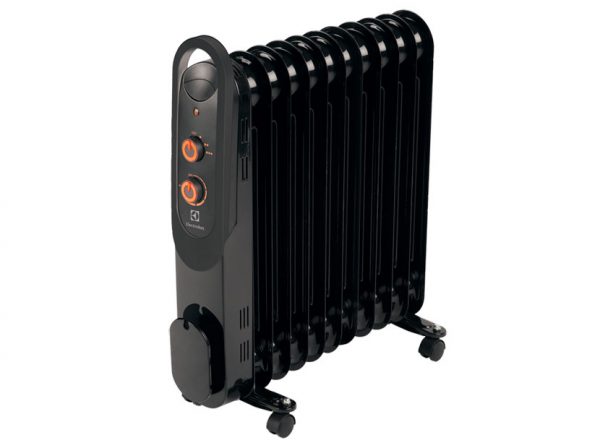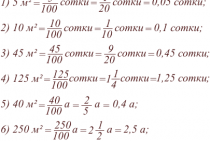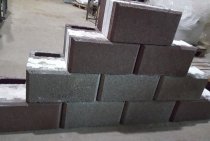Electricity consumption
To calculate how many kilowatts a heater consumes, you need to make simple calculations that any user can do. How much electricity is consumed by this or that heater? Let's count.
Take as an example a device with a power of 2 kW or two thousand watts. For an hour of work, it consumes two kilowatts. Let's imagine that on cold days the heater works eight hours a day, after an hour of work there is a break for two hours. Sixteen kilowatts are consumed per day. The number was obtained by multiplying the number of working hours by the consumption per hour. The monetary equivalent is calculated simply: the price per kilowatt is multiplied by the number of kilowatts spent. The amount of consumption varies depending on the intensity of use of the device.
The data obtained helps to easily calculate how much electricity is spent per month, during the entire cold season. The indicators depend on weather conditions, how often and for how long the heater operates. If we imagine that a particular month was very cold and the device heated the room every day for eight hours, the monthly electricity consumption will be four hundred and eighty kilowatts.
To pay a minimum, you need to rationally use climate technology. Buying a high-quality and suitable heater will allow you to organize the minimum consumption of electricity, which means it will not hit your wallet.
The use of any heating device will increase the consumption of electricity. In order for the increase in costs to be insignificant, you need to find out in advance the basic information about different types of heaters and choose a device with a high-quality thermostat. It is designed to set the exact temperature regime, regulate the operation of the device: turn it on and off, increase and decrease power.
The best option to optimize the process is to purchase a heater with a temperature controller or thermostat. If necessary, the timer can be purchased separately.
Traditional heaters that are not equipped with temperature controllers are not the most convenient to use: they must be turned on and off independently depending on the air temperature. Also, it does not allow pre-heating the room before the arrival of family members.
To eliminate a lot of problems and potential dangers, you can purchase a heater thermostat.
It will help to set the cycle, mode and power of the heater. The use of thermostats allows you to optimize the heating process, thanks to its functional features:
- you can independently set the desired temperature;
- devices automatically regulate the switching on and off of heating equipment;
- the heater turns on only when the temperature drops to the specified one, so it is possible to regulate the consumption of electricity and normalize the process of resource consumption;
- you can independently control the microclimate in the room, preventing the air from drying out.
On sale there are electronic, electromechanical thermostats and thermostats for infrared heaters. GSM and WI-FI adjustable controllers appeared.
Having equipped the thermostat, you begin to independently control the consumption of electrical energy - this is the main advantage of the device. Installing a thermostat has many advantages:
- function of automatic load reduction in the network by fifty percent;
- full heating even with reduced network load;
- the ability to control every kilowatt of electricity;
- setting an individual temperature regime for any room;
- programming daily and weekly cycle;
- ease of management;
- no clicks when changing the operating mode.

The thermostat can be installed at a distance from the heater, on its surface or inside the device.
How much does an infrared heater consume 2 types of device
There is a room of 17 m 2 and central heating, which maintains a 20-degree temperature in the room. What will be the daily energy consumption if I use a convector to raise the temperature in the room to 25 degrees?
I would really like to know about detergents and cleaners for the most common surfaces, such as a bath, toilet, kitchen, microwave ... and cleaning products, the cheapest, the most expensive, and the middle???
The oil cooler is self-sufficient. Depending on the volume, the warm-up time may vary. But after the device has entered the operating mode, it shows excellent characteristics of economy and efficiency. The heating elements are switched on for a short time, the radiator almost constantly has the same temperature.
The convector heater became the unequivocal winner: maximum heat for average money. The only limiting factor is the price.
Oil radiator
The classic type of heater and the slowest, in my opinion.
Principle of operation:
- first, the filler (oil) is heated by means of a hidden heating element or spiral;
- then the case warms up;
- after that, the heat begins to spread to the environment.
That is, an oil fireplace heats the air, but the walls, floor and objects around remain cold. In addition, the device needs time - and considerable - to heat the case. As a standard, such devices have a power of 1-2.5 kW and are not economical. Suitable for use in small rooms with a closed door. I would not take such a heater for the house, but in the office it is the place. The advantage of such devices is that you can dry things on them, which is very convenient if you get to work on a rainy day. A big minus is that the oil cooler is short-lived, the older the model, the more dangerous it is due to the fact that oil can leak out and cause a fire or burn.
Conclusion: oil appliances lose to other types of heaters in terms of economy, performance and safety.
How much electricity can household electrical appliances consume.
1. Computer
Calculations that will show how much electricity a computer spends will be carried out approximately, since it all depends on the power of your computer's power supply and the specific work that the computer is currently doing.
For example, with a computer unit with a power of 350 to 550 watts, it is unlikely to consume all the power even at full load. It is also necessary to take into account the monitor - from 60 to 100 watts. In total, with an average power supply for a computer of 450 watts and a monitor of 100 watts, you get 550 watts or 0.55 kW of electricity per hour. This figure is greatly inflated. For an approximate calculation, you can take the maximum value - 0.5 kW / h. Thus, when using a computer 4 hours a day, you get 60 kW / h per month. (0.5*4*30). Now we can start from these figures, for example, when using a computer 8 hours a day, we get 120 kW / h. per month.
2. Refrigerator
The technical passport for the refrigerator indicates the electricity consumption per year. Basically, this figure is in the range from 230 to 450 kW / h. Dividing this value by 12, we get from 20 to 38 kWh of electricity consumption per month. This indicator is applicable only for ideal conditions. The amount of power consumed depends on the volume of the refrigerator and on the amount of food in it. It is also necessary to take into account external conditions, depending on the time of year.
3. TV
TVs are different. On average, for calculation, we will take 100 W / h. For example, when watching TV, you spend 5 hours a day - 0.5 kWh.About 15 kW/h per month. LCD TVs with a large screen diagonal consume 200-50 watts per hour. Screen brightness also plays an important role. Accordingly, we calmly multiply the number of kilowatt-hours spent per month by 1.5. It turns out about 23 kW / h, but this is an average value, do not forget about it. Plasma TVs with a large diagonal consume from 300 to 500 watts per hour. If you have several different TVs in your apartment, sum up the values.
4. Washing machine
In order to determine how much electricity a washing machine consumes, you need to know the washing mode, the weight of the laundry and the type of material. On average, the power will range from 2 to 2.5 kWh. However, it is rare that machines consume this amount of electricity. For calculations, you can take from 1 to 1.5 kW / h. When washing 2 times a week for 2 hours, we get from 16 to 24 kW / h.
5. Kettle and iron
Most of the energy consumed in the apartment is a kettle and an iron. Working for a minimum amount of time, they consume the same amount of electricity as some appliances in a month. With a kettle power of 1.5 to 2.5 kW / h, using it 4 times a day for 5 minutes, we get from 20 to 25 kW / h per month. Iron is a similar story. Its power is about the same as that of a kettle, if ironed 3 times a week for 1 hour, it will turn out from 25 to 30 kW / h per month.
Not all appliances that consume electricity are listed here, they can also include microwave ovens, vacuum cleaners, phone chargers and laptops. You also need to take into account incandescent lamps, which, depending on their number, power and operating time, can consume from 50 to 100 kW / h of electricity per month.
As a result, through such calculations, we get the approximate consumption of electricity will range from 200 to 300 kW / h per month.
Many have heard that the increased electricity bill is entirely your fault. Either you sit at the computer a lot, or you watch TV for too long, and you also iron and wash too often. But let's try to figure out how much electricity household appliances can consume.
Which heater is the most economical in terms of electricity
Before the start of the heating season, it is worth considering in advance what equipment will be optimal for the home.
There are several types of heaters:
- Electric (convector).
- Infrared.
- Mycathermic.
- Air conditioner.
- Ceramic plate (panel).
Electric heater in the interior
Electric convector
By the principle of operation, it is similar to an oil cooler. Air circulates through the heating element. The heated air rises, and after cooling, it descends to reheat.
Atlantic models are considered the most popular. The power of convectors varies from 0.5 to 2.5 kW. For heating a room of 20 sq. m. will take 4-5 hours.
Electric convector Atlantic
Infrared heater
Oil and electrical products have been replaced by a new type of heating equipment. The power consumption of such equipment is much less. A quartz emitter is a heating element that heats up and gives off heat to nearby objects. Such equipment does not heat the air. It is suitable for quickly heating a room. But it is not able to heat the whole house with high quality for a long time.
The infrared device can be installed outdoors. The equipment can be mounted to the ceiling or installed on legs. For heating a room up to 20 sq. m. it will take 2 hours.
Popular models: Eko, Saturn, Beko, etc. The product consumes an average of 90 W per sq.m.
Micathermic heater
Such a product is distinguished by its economy and efficiency. It was developed using new technology and is being produced not so long ago. The equipment was previously used in astronautics and medical institutions.You can install the equipment on the ceiling or wall.
Micathermic heater heats up efficiently, as it has several plates that are covered with mica. It is safe as it does not get hot. Objects around the appliance heat up evenly.
There is one drawback in the equipment - high cost. A quality model is a Polaris product with a power of 1.8 kW.
Micathermic heater Polaris
Air conditioner
The air conditioner is economical. Often used to heat a country house. The equipment consists of indoor and outdoor unit. Space heating is different from other heating appliances.
The air conditioner is powered by a heat pump. It takes warm air into the room with the help of a heat exchanger. Therefore, even at negative temperatures, the air heats up and enters the house already warm. Freon is used for heating. Under the influence of pressure, the gas passes through the indoor unit in the heat exchanger and heats up to 80 degrees. After that, freon passes into the outer part and returns to the gas under low pressure. After boiling, it again flows into the indoor unit.
From 2 to 5 kW of electricity is spent per hour, depending on the model. Air conditioners can heat houses even with a large area. Popular models: Samsung, Daikin and LG.
ceramic panel
Such equipment is also considered economical. The device looks like a ceramic plate. It works on the principle of infrared long-wave radiation. Great for different interiors, as it has a steel heat-conducting box. The panel can be mounted on a wall or ceiling.
To calculate the electricity consumption, it is necessary to take into account the dimensions of the device. On average, the panel consumes 0.2-2.5 kW per hour. Room 20 sq. m. can be fully heated after 2 hours.
Classification of oil coolers
Oil-filled electric heaters are classified as follows:
- Floor radiators. The most popular and widespread type of oil heaters. The device is equipped with special wheels for ease of movement. Often such devices are universal in terms of installation type, i.e., they allow the use of both floor and wall mounting.
- Wall radiators. With the help of brackets, which are equipped with such heaters, they are hung on the wall. Compared to floor structures, wall modifications are less powerful and have lower heat dissipation.
- Plinth heaters. The latest modified development of the device with a wall-mounted arrangement. The device is placed at the bottom of the wall, which ensures good air circulation. It is used as a full source of heat, which is an alternative to central heating.
- Heaters with thermostat. In order to ensure uninterrupted operation of the device for a long time and reduce electricity consumption, electronic thermostats are built into the heaters that maintain the set temperature and exclude possible drops.
- Fan heaters. To speed up the heating of the air, the devices are equipped with built-in fans, which additionally redistribute the flow of air masses. The negative point inherent in these varieties is the noise during the operation of the fan.
Oil heater of which company to buy
Timberk
A well-known international holding with subdivisions in Sweden, Finland, Russia, China and Israel. It produces climate equipment, in particular innovative heaters, which it sells through its bases located in Europe and Asia. If, for example, every 200th radiator of the same brand is found to be defective, the product may be discontinued.
Delonghi
Successful Italian company, constantly developing and buying other companies.Its enterprises produce climatic devices that are distinguished by high manufacturability and quality, as well as ease of operation. Oil heaters assembled in Italy, China, Russia are popular all over the world.
Electrolux
The world's leading Swedish company in the mechanical engineering industry with an annual revenue of around €10 billion. Owns many well-known brands under which high-end products are sold, including oil-filled electric radiators. The latter are in demand due to their versatility, safety and quality.
Hyundai
South Korean industrial giant, one of whose divisions specializes in climate technology. Heating appliances of the corporation are in demand among users, since they are created by qualified specialists, they are distinguished by efficiency, reliability and reliability.
General Climate
Holding with enterprises in Germany, Russia, Czech Republic, China, producing modern household goods. The basis of the activity is based on win-win principles - quality, convenience, accessibility. Exactly such - effective and inexpensive - are the manufacturer's radiators.
Which oil heater to buy
The convector provides protection against tipping, overheating, this type of heater can be hung on the wall for convenience, it has a flat shape and small size. How much electricity does the printer use?
An oil cooler is the next heating unit in the price category, which comes after fan heaters. It consumes a little less than convection, because, heating is performed intermittently. And the convection type, after turning on, works until it is turned off.
The most understandable example of this type of device can be called a heating battery. The principle of operation of long-wave infrared heaters is based on heating the material, which is located around the tungsten spiral.
These heaters alternate heating and rest. During rest, they practically do not consume energy. Many consumers feel that it is better to use oil heaters, as the advantages of such heaters outweigh the disadvantages. Knowing how much electricity an oil cooler consumes per month, a person can calculate how to rationally use electricity.
Among those who for some reason need additional heating of the room or simply do not have the main one, there is a constant debate on the topic: what is better - a fan heater or an oil heater. There is no definite answer to this question. However, we will try to show the capabilities of both classes of devices that are used in the same conditions, highlight their advantages and disadvantages.
For this type of premises, the power of the electric convector is required - 150 W / m 2. Your garage has an area of 66 m2. You will have to buy a convector with a power of 7-8 kW. Or several devices, the total power of which will be equal to this number.
The main difference between infrared devices is the heating temperature of the tungsten coil and the material around it. The second criterion is the level of power consumed by the device and the consumption of electricity.
For this type of premises, the power of the electric convector is required - 150 W / m 2. Your garage has an area of 66 m2. You will have to buy a convector with a power of 7-8 kW. Or several devices, the total power of which will be equal to this number.
At the same time, the surfaces of objects heat up in a matter of seconds. Further heated objects give off part of the heat to the cold air in the room, which can significantly save energy consumption.
The cost of such devices ranges from 2000 rubles to 7000 rubles. To test, we purchased an Electrolux ECH/L-4. worth 4300 rubles.
Guarantee
The warranty period for storage of oil coolers is 1 year, and for use - 2 years.
During the warranty period, the manufacturer guarantees satisfaction of the buyer's requirements related to problems in the operation of the radiator, subject to the rules for operating, transporting and storing the device.
Warranty obligations are fulfilled only if the fact of purchase is confirmed by a receipt, where the date of purchase is clearly visible.
Warranty obligations are not fulfilled in case of mechanical damage to the device, such as dents, scratches, and other defects.
Main advantages and disadvantages
It is not in vain that an oil appliance is considered the best means of heating for a home. It has an impressive list of advantages:
- does not dry the air;
- ensures smooth and constant heat transfer;
- does not require maintenance;
- fireproof;
- equipped with reliable mechanical and electrical protection systems;
- durable, carried out in a corrosion-resistant case;
- consumes power acceptable even for average wiring in an apartment;
- you can purchase a heater for a nursery, made in a protective case, with safe section ribs;
- dust is not burned, there are no unpleasant odors;
- does not make noise, except for a short period of the first start;
- a good device moves on wheels, some models can be attached to the wall.
When making a personal choice which oil heater is better, you should pay attention to some of the shortcomings of individual models.
- Cheap room heaters equipped with a fan warm the air quickly, but the noise is a nuisance.
- It is worth choosing a device in a reliable design, with anodized, galvanized or stainless steel radiator walls. Inexpensive models are often prone to corrosion.
- Narrow and tall models do not always have good stability.
- The most powerful appliance is not always the best choice for heating a room. A device with multi-stage temperature control is much more convenient.
If you describe how to choose the right oil heater, you can confidently say: the device should be about 50-65 cm in height, on a wide wheel support, with reliable radiator walls, and have multi-stage temperature control. Having made such a purchase, you can immediately compensate for most of the shortcomings of inexpensive oil heaters.
infrared devices
Innovative devices that just conquered the technology market 10 years ago and sunk into the souls of consumers. They have their advantages and disadvantages, but when I talk about savings, I mean infrared devices.
Notice that I deliberately do not say - heaters, since there are several types:
- The usual lamp device with a spiral.
- Plasterboard wall heater.
- Film heating system.
A feature of the first type is that it can be used both indoors and outdoors. The whole secret is in the principle of heating. If oil and convector fireplaces heat the air, then infrared devices are objects.
Imagine that the air temperature has risen slightly, the humidity has remained at the same level, but you feel warmth literally from the inside. This is because the infrared radiation heated the walls, floor, ceiling, furniture and, in fact, your body.
Due to such an unusual effect, such heaters require a minimum of energy to heat the room. You turned on the device and in just a few minutes you begin to feel the heating.
The most economical are plasterboard infrared panels and film insulation. They work like sunlight, naturally saturating the interior with heat without drying the air, and are able to completely replace the central heating. The only negative is that they must be mounted at the construction stage.
As an additional heating device, a small ceiling-mounted infrared emitter is ideal. For heating a room up to 15 sq. m. enough power of 500 watts. Such a device can be mounted on the ceiling, fixed on a floor stand or simply placed on the table.
More powerful infrared fireplaces are undesirable to operate indoors, less than 20 m 2.
Conclusion: infrared heating systems are the most economical and efficient for large rooms and open areas. But be careful - long-term direct exposure to the rays negatively affects your well-being.
How much does an oil heater consume per day
This type of heater burns a small amount of oxygen and consumes little electricity. In addition, they are not as flammable as other appliances.
The disadvantages are high cost and heavy weight. On average, an oil heater consumes 750 watts per hour. More powerful heaters consume about 1 kW. But you can find devices with less power.
Since the device works several hours a day, the power consumption is much less.
The more power the device has, the more electricity it consumes. When the device is turned off and in rest mode, it does not consume energy. Despite some disadvantages, there are more advantages. That is why it is popular among residents of private homes. You can calculate the amount of electricity consumed after 1 month of using the device.
Benefits of an IR heater
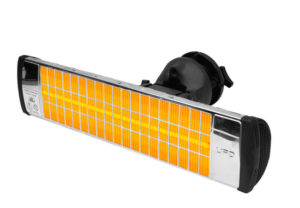
- do not reduce the amount of oxygen in the air;
- due to the hit of the rays directly on objects, they are well suited for large areas: shops, cafes, restaurants;
- heat rooms three times faster than conventional heat sources;
- evenly distribute heat in the upper and lower layers of the air;
- not dangerous to the body. Moreover, infrared ray therapy treats colds, relieves excess weight, cellulite, stomach malfunctions;
- the built-in regulator provides automatic switching on and off;
- the created temperature difference between heated objects and air has a beneficial effect on the state of health;
- noiselessness of work;
- maintain optimal humidity in the room and protect the air from dust;
- work perfectly in the external space, including in the winter;
- protect from fires;
- combined with the operation of additional ventilation devices;
- affordable installation in contrast to the heating cable;
- long service life;
- highly aesthetic.
Principle of operation

If we talk about other heating devices, then, for example, a heating cable supplies heat only to the floor, an electric convector, an electric boiler, an oil heater work on the ambient air, through which objects in the room are heated.
It is better to direct IR rays not at walls, windows and doors, but at furniture and interior, so that heat is saved and does not go outside.
What is better convector or oil heater comparison of characteristics
An oil heater consumes electricity energy, sending it to the heating element. The power of the heating element depends on the resistance of the coil. Both small and large devices consume the same. An instance where there is more oil heats up longer and gives off more heat. In this regard, it is not easy to accurately choose the right one without focusing on the advantages of the goods.Recently, infrared heat sources have been popular with buyers, which have proved to be the most profitable and comfortable.
Keep in mind that there is a night rate. And it may be more economical to heat the water at night and use it all day. In winter, the temperature of cold water is much lower and, accordingly, this increases the heating time.
Despite the wide range of choices and functionality of electric water heaters, their home-made counterparts, even in our time, do not lose their relevance. This is due to the fact that home-made heaters are much more economical and therefore a home-made electric water heater is used for heating in an outdoor shower or in a washstand in a summer cottage.
When calculating, it is important to pay attention to the fact that it is made without taking into account the heat loss of an electric water heater to the environment. For such an apartment, you need to purchase an electric convector, the power of which will be approximately 4.5 kW. But it is better to buy two devices (in each room) with a power of 2.0 kW
If they operate 15 hours a day, then the daily consumption will be 60 kW (15x4.0)
But it is better to buy two devices (in each room) with a power of 2.0 kW. If they operate 15 hours a day, then the daily consumption will be 60 kW (15x4.0)
For such an apartment, you need to purchase an electric convector, the power of which will be approximately 4.5 kW. But it is better to buy two devices (in each room) with a power of 2.0 kW. If they operate 15 hours a day, then the daily consumption will be 60 kW (15x4.0).
The principle of operation of the fan heater is the uniform distribution of air by the propeller, heated by a special spiral. Such a fan has a low price, but it is quite noisy and has a high case temperature, which is why oxygen in the room is burned when it is used. “About 1.5-2 kilowatts per hour” is the answer to the question: “How much energy does a fan heater consume?”
The walls of the room are made of plastic panels. I want to install a wall-mounted convector model. Will the walls overheat and is additional insulation needed between the machine and the wall?
What not to worry about
I so often hear a request to advise a heater with high efficiency that I have ceased to be surprised. And at first I was amazed at the strangeness of the question - on any heating device there is a marking “95% efficiency”. It can’t be less - why would someone need a device that works halfway? Any electric fireplace should give off maximum heat, and it does this because of its power.
It doesn't matter if it's oil, infrared or convector - each is programmed to convert all the energy it consumes into heat. Another thing is the heating rate and the way it affects the environment.
The type of heating device is important here.
Advantages and disadvantages
Oil-filled electric heating radiators have a number of positive qualities, including:
- Compactness. These batteries take up little space.
- Mobility. Most models, thanks to the wheels, can be easily moved from room to room.
- Safety. The metal case does not heat up above +60…+70°C, which eliminates the possibility of burns and injuries. All working elements heated to high temperatures are inside the casing.
- Noiselessness. Oil batteries do not make noise during operation (except for models equipped with fans).
- They do not dry out the air in the room, do not burn out oxygen and do not emit unpleasant odors (compared to devices with open heating elements).
- Democratic price.
- Ease of operation. It is enough just to plug the cord into the outlet and follow the simple rules.
The disadvantages of such structures include the following qualities:
- Inertia.Mineral oil takes a long time to reach the operating temperature (due to its high heat capacity) and the room is heated slowly. But the liquid does not cool down immediately, gradually giving off the accumulated heat.
- Sufficiently large weight and dimensions, which is not always convenient. The disadvantage is compensated by the presence of wheels.
